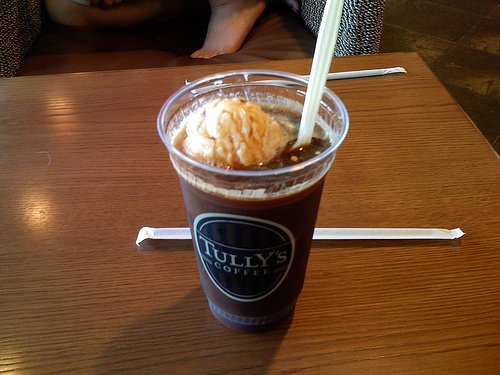The rush is on to choose a successor to Prime Minister Abe after his sudden resignation on Wednesday. I saw that some of the newspapers in the U.K. were calling for a bolder, more dynamic Japanese leader this time, and I agree, although I know what a challenge it’s likely to be. The difference between a Prime Minister and a President is, of course, that the former is chosen by his party and the latter is chosen directly by voters, essentially making a Japanese leader’s relationship with the other members in his party more important in a way than that of his own people. In group-oriented Japan, it’s difficult for any individual leader to stand out too much without being knocked back in line by his peers, an effect known as deru kui wa utareru or “the standing nail will be hammered down.” It seems that any show of real imagination in a politician leads to them immediately being opposed by just about everyone, and Japan has gone through 11 PMs since I’ve been in Japan, where Britain has had just three. That’s why Junichiro Koizumi was such a breath of fresh air in Japanese politics — a charismatic bachelor who liked rock music, a maverick who had the popularity to chop much of the deadwood out of the Old Guard of Japanese politics and reign in Japan’s (largely wasteful) public works projects. He even looked like George Washington. Currently the leading candidate to replace Abe looks to be Taro Aso, who was the Minister of Foreign Affairs in the past two governments. Although everything is still very much up in the air, he is an interesting candidate, having studied at Stanford and in London. He’s also a big fan of anime culture, and was the force behind the creation of a “Nobel Prize in Manga” to promote Japan’s pop culture around the world. He reads thirty manga volumes a week, and I hear he likes Rozen Maiden. Could we be looking at Japan’s first otaku Prime Minister? Or will former Cabinet Secretary Yasuo Fukada, who happens to be from our prefecture of Gunma (Yasu lives in his district) be able to get more support?
After living in Japan for 15+ years, my language skills are as good as I need them to be. But bilingualism is never absolute, a fact I am reminded of whenever I turn the channel and catch Raw Debate Until Morning, a news discussion program broadcast every couple of months in which politicians and economists debate the issues of the day from midnight all the way til the sun comes up on live television — that show is hard to follow. When you’re learning a foreign language, it’s important to get input from a variety of sources. I had a Japanese friend who arrived in the U.S. and taught herself English by watching daytime soap operas, and as a result she was really good at any conversation involving romance or adultery, but not much else. Like many anime fans interested in learning Japanese, I got a lot more exposure to anime and manga than from any other source, and I learned at some cost that people don’t really speak like Kenshiro from Fist of the North Star. It’s better to broaden your interest, exploring different kinds of media like Japanese music, Japanese dramas or films, and whatever else seems interesting.
Ever heard of Zena, Yunker and Aspara? They’re Japanese energy drinks, a major category of product in Japan that promises to improve your health, remove tiredness and give you the energy you need to be successful in business. Although the small single-serving bottles usually provide nothing more than caffeine and vitamins in a sweet syrup, the marketing muscle behind the drinks has turned them into a consumer sub-culture, Japan style, and Japan consumes more energy and sports drinks than any other country. The first health drink was Lipovitan, released in 1962 by Taisho Pharmaceutical, and it’s still the industry leader, with a staggering 2 million bottles sold every day. For four decades Lipovitan’s TV commercials featuring a pair of burley men who cry out Faito! Ippatsu! (“Fight! One more push!”) as they perform some athletic activity have been as famous as Mr. Whipple (er, is he still famous? I’ve been in Japan too long to know for sure). Back in the 90s another Japanese energy drink, Regain, served as a symbol of the differences between Japan, Inc. and the U.S., and their current commercial showing Japanese businessmen scaling a building in their eagerness to get to work is one of their best ever. In addition to giving you back your “genki” (pep), some of these energy drinks promise to revitalize men (wink wink) with Chinese herbs, cure your cold symptoms, and remove your hangover in record time.
Speaking of energy drinks, all Japan has been buzzing about the Final Fantasy 10th Anniversary Potion, an extremely limited boxed set that includes a gorgeous potion in a glass and metal container and a commemorative art book, which seemed to sell out completely in Tokyo’s otaku mecca of Akihabara today. Although supply has been extremely limited, we’ve been able to get some stock of this item for J-List customers. Featuring the official logo of the Shinra Company, it’s a great item that all FF7 fans should be sure and check out. Get yours before they’re gone!

Just some random pics I had in my camera. Does Starbuck’s sell a scoop of ice cream in their ice coffee? They’re missing out here…

This is from our favorite Kyoto style ramen restaurant. They specialize in matcha stuff, and the matcha ice (meaning matcha ice cream) is just delicious.

In Karuizawa there’s this little cafe that (oddly) serves great yakiniku (Korean BBQ) inside. Cooked over actual coals!

In commemoration of the release of the iPod Touch, I thought I’d give you my favorite wallpaper. I love this Haruhi pic.

Or if you’re a Heroes fan, this works too…














